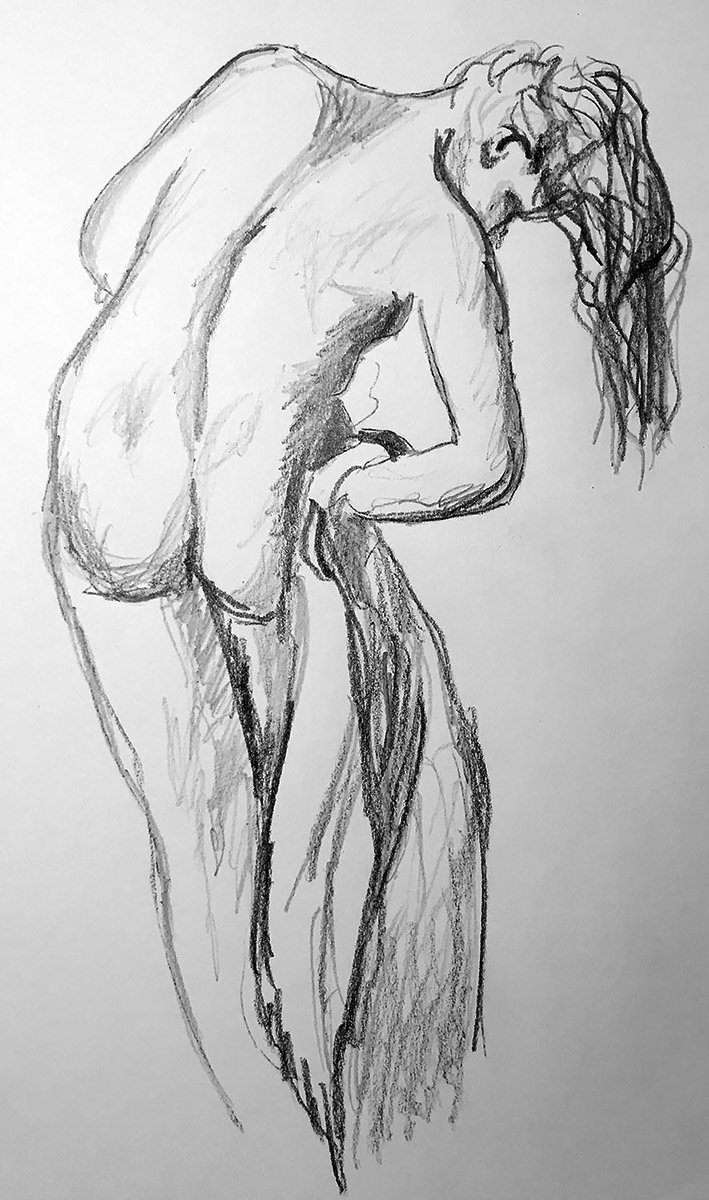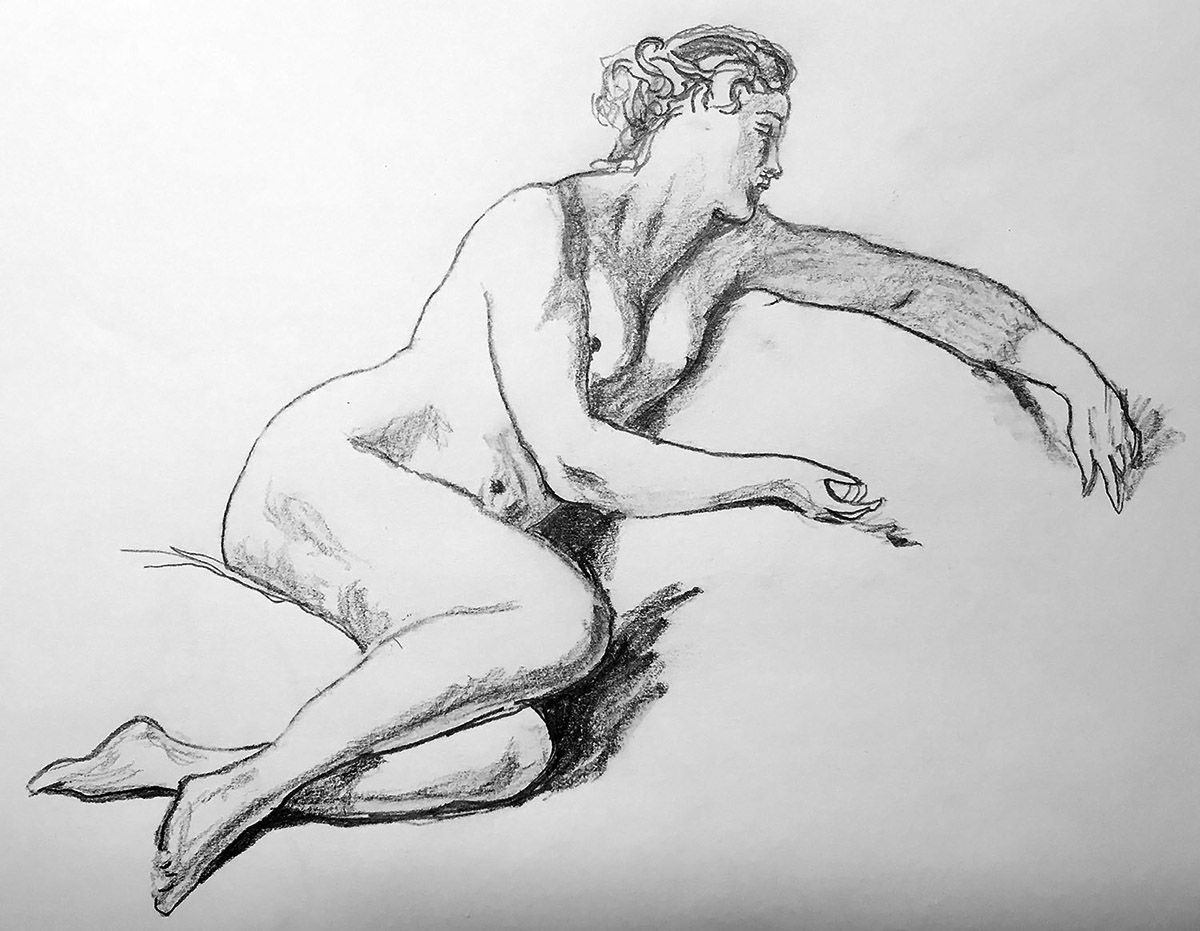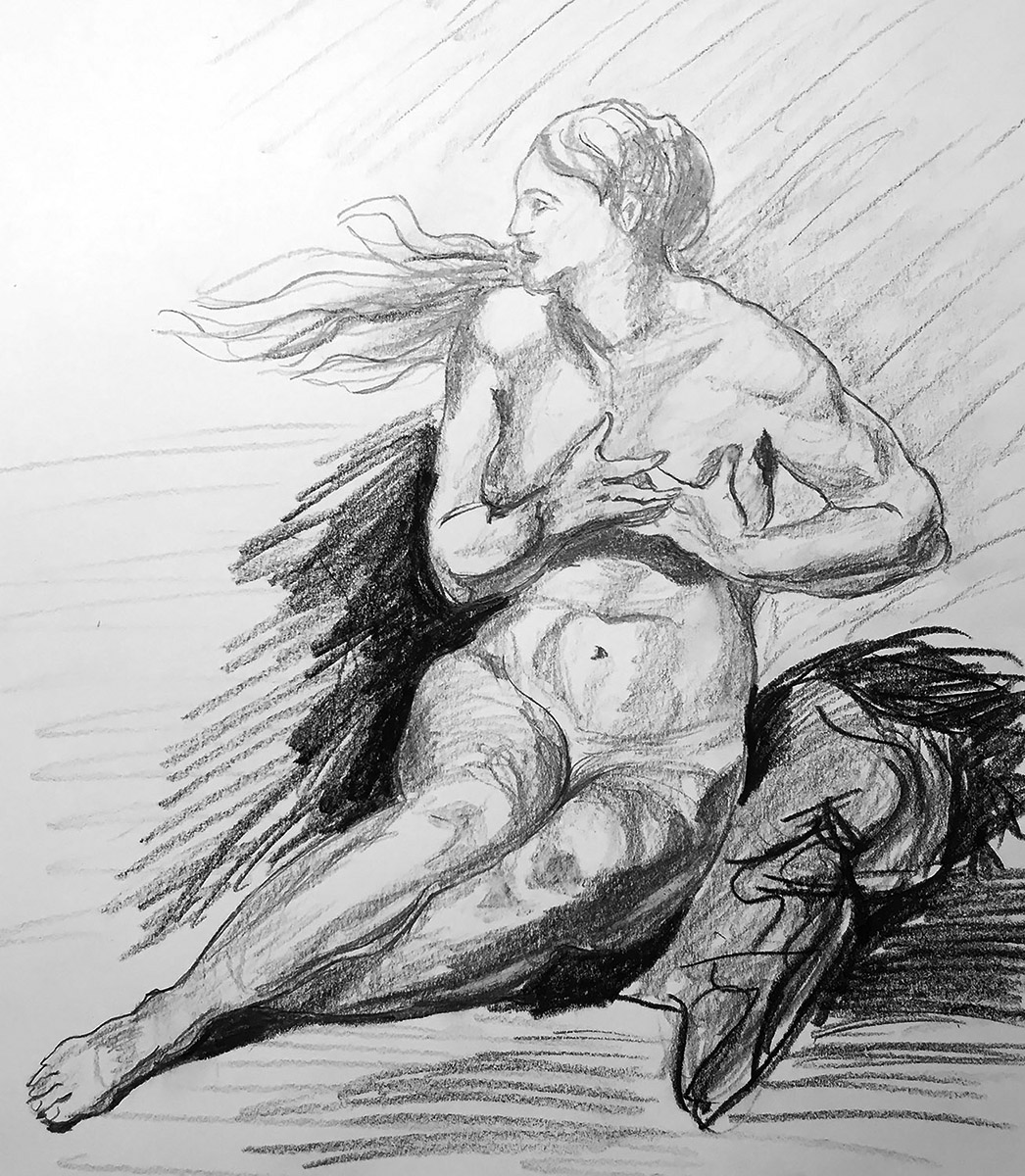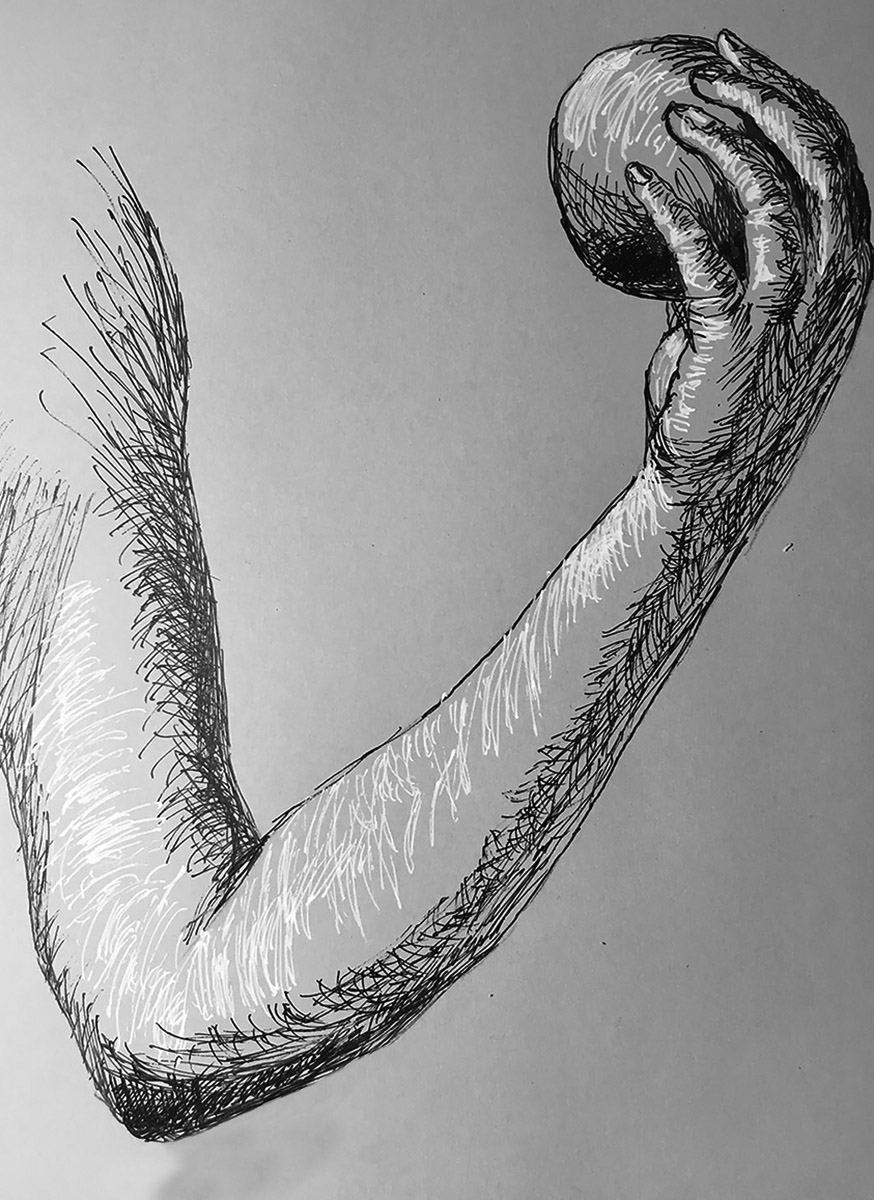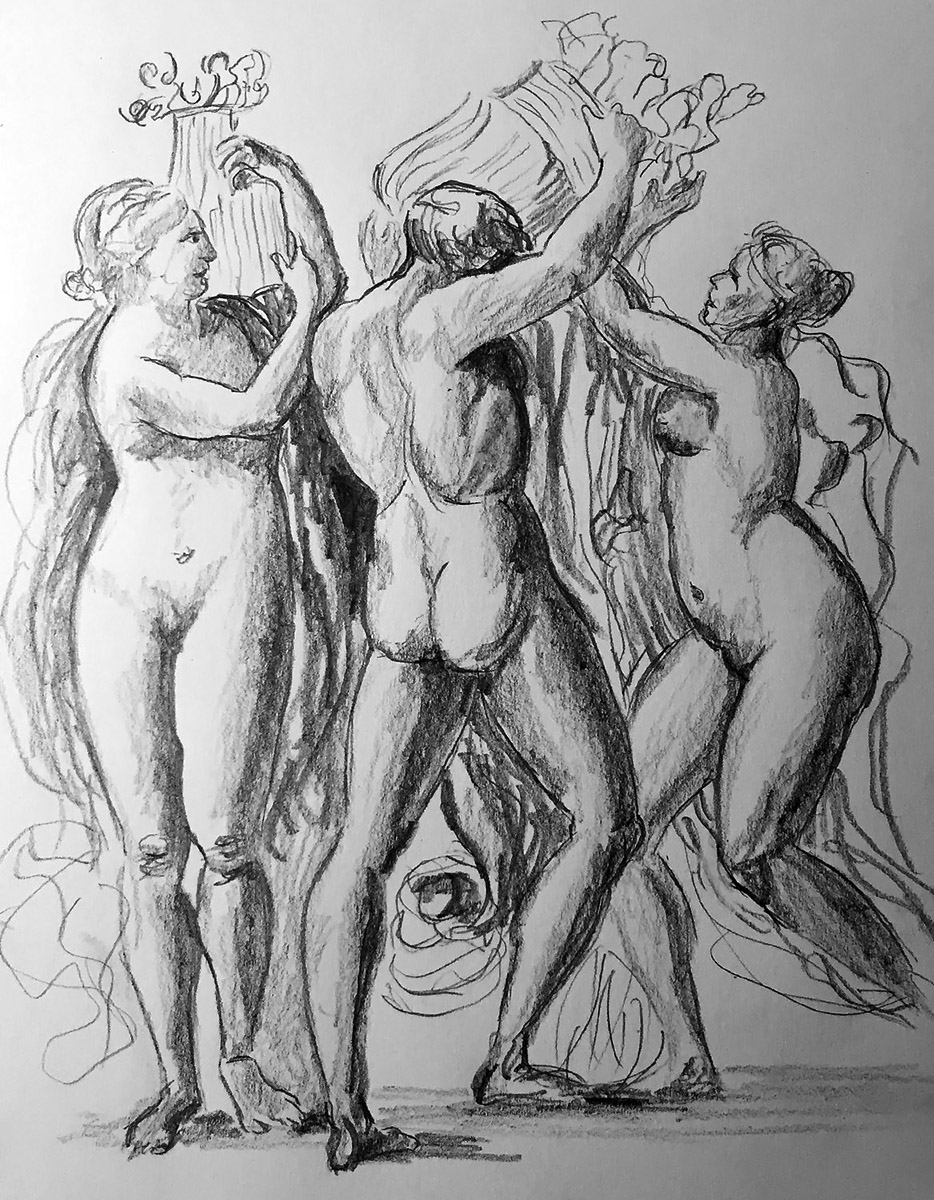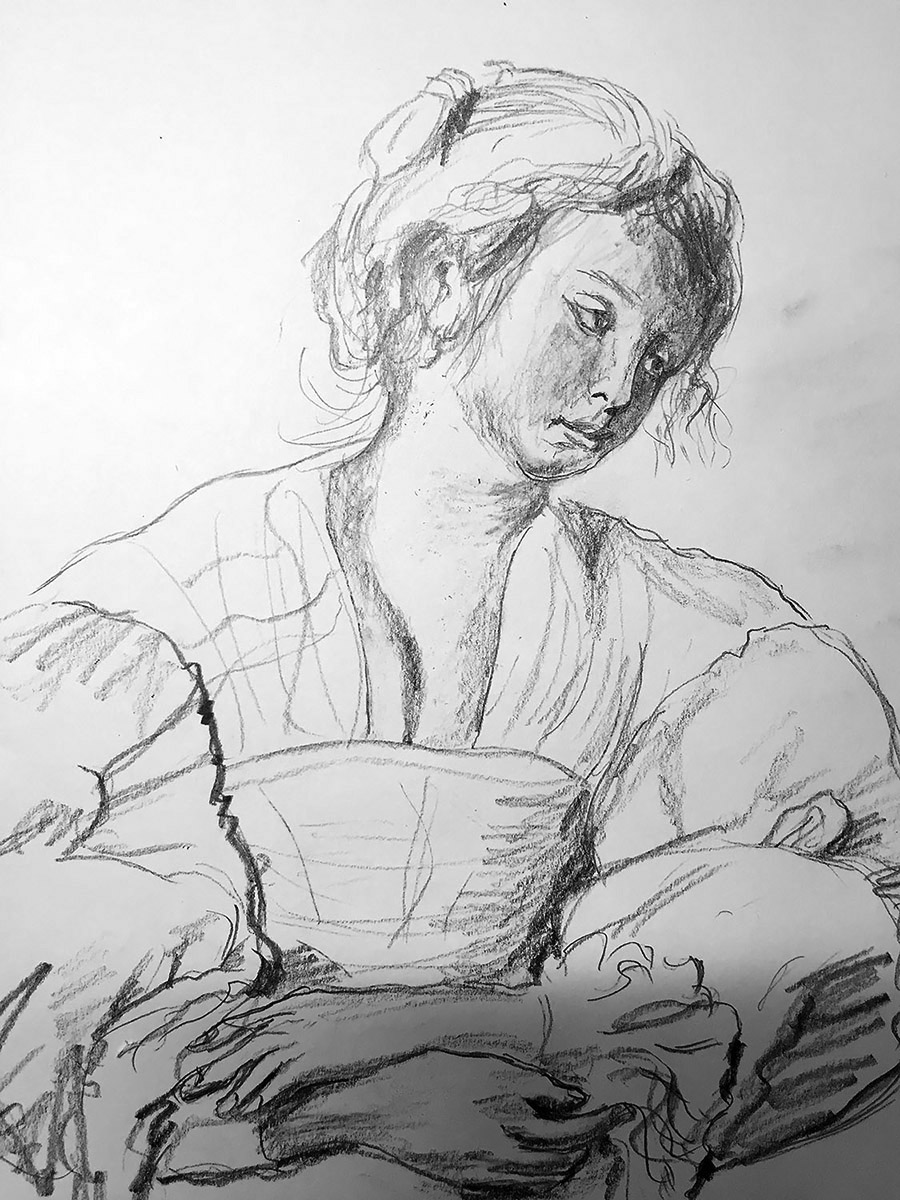
Alright, so it has been a while since I have posted anything. I do have lots of things to post. I have been making things but not posting those things. I think you get the idea. I think it is in part because I feel like no one will ever read this nonsense. But, as a wise man or wise woman or perhaps they were just a regular man, woman, or non-binary person said, “Pretend like your work matters.” So here is another post of a drawing copied from an old master for all of my imaginary friends to see. I’m now writing with the aid of the Grammarly software program, so if the quality of the writing is improved, you can thank Grammarly for that.
The drawing was done in graphite pencil and was copied from a work by Peter Paul Rubens, which was drawn in red chalk, black chalk, and heightened with white. My copy looks a lot sadder than the original in both the quality of the work and the expression of the young woman.
The original drawing by Peter Paul Rubens is currently in storage at the Museum Boijmans Van Beuningen in Rotterdam, Netherlands. If you are like me, my condolences, and you are also wondering who is Boijmans Van Beuningen? Let’s ask Co-Pilot, the Microsoft Bing AI tool for writing stuff.
The name Boijmans Van Beuningen is derived from the two most important collectors: Frans Jacob Otto Boijmans and Daniël George van Beuningen 1. The museum houses a unique collection of paintings, sculptures, and everyday objects. It’s one of the oldest museums in the Netherlands, with a history dating back to 1849 when lawyer Boijmans left his art collection to the city of Rotterdam. In 1958, the museum acquired the Van Beuningen collection, adding to its rich heritage 2. The museum is currently closed for renovation and modernization, but you can explore thousands of artworks from its collection online 3. Additionally, Depot Boijmans Van Beuningen, located next to the museum, is the world’s first publicly accessible art storage facility, where visitors can see over 154,000 objects housed in fourteen storage compartments with different climates4.
1 en.wikipedia.org, 2 artsandculture, 3 boijmans.nl, 4 boijmans.nl


